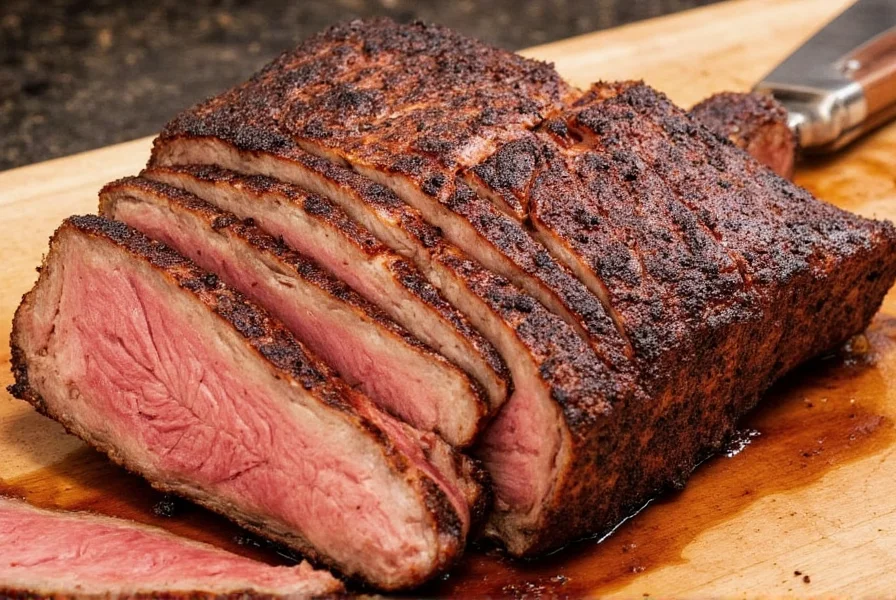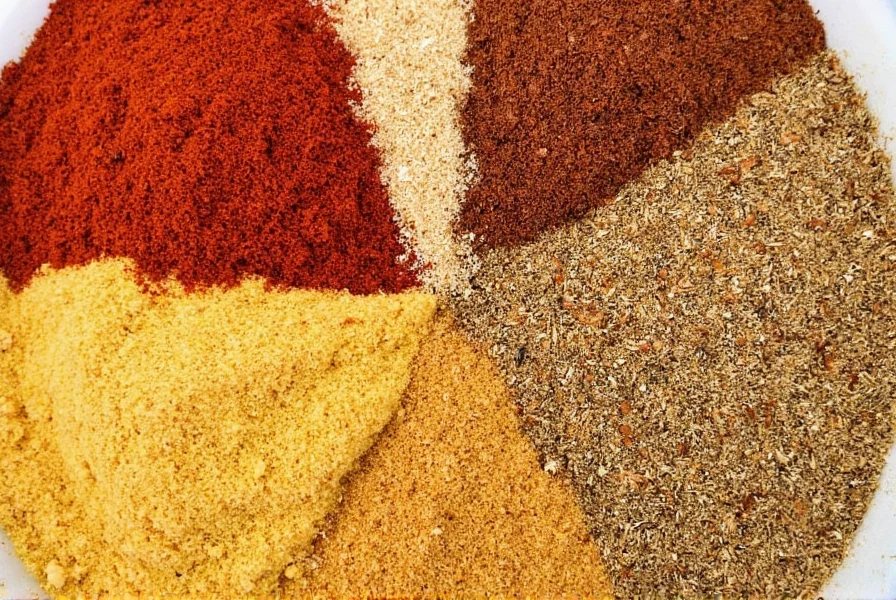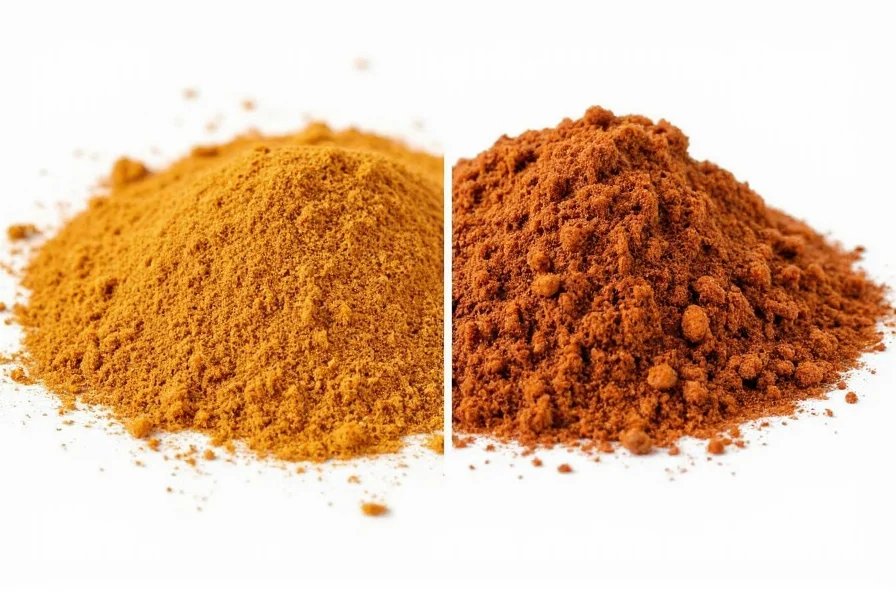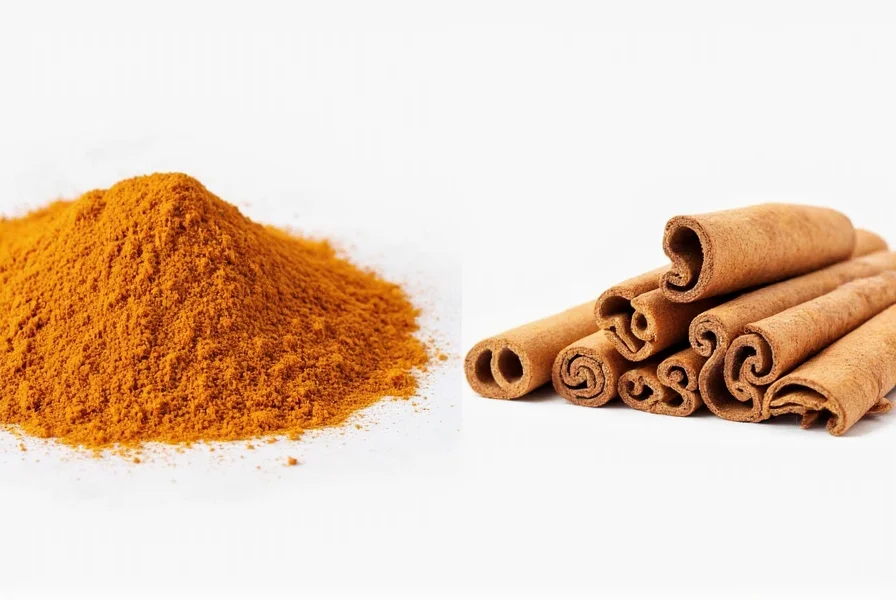When it comes to warm, sweet spices, few are as beloved or widely used as cinnamon. But did you know that what's often sold as 'cinnamon' in grocery stores is actually cassia? Yep, there's a whole world of difference between cassia vs cinnamon. From flavor profiles to health benefits, these two may look similar, but they're not quite the same spice.
| Feature | Ceylon Cinnamon | Cassia Cinnamon |
|---|---|---|
| Origin | Sri Lanka, Southern India | China, Vietnam, Indonesia |
| Appearance | Thin, brittle quills | Thick, woody bark |
| Taste | Delicate, citrusy, floral | Strong, spicy, slightly bitter |
| Texture | Soft and easily ground | Coarse and tough to grind |
| Price | Higher | Lower |
| Use Case | Teas, custards, light pastries | Breads, cakes, spiced meats |
| Coumarin Content | Very low | High |
Introduction: More Than Just a Sprinkle
We've all grabbed that jar labeled 'cinnamon' for our morning oatmeal or holiday cookies. But if you've ever tasted a recipe made with true cinnamon (Ceylon) versus cassia, you'll notice a big difference. This article will walk you through everything you need to know about cassia vs cinnamon, from origin and taste to usage and health effects.

What Is Cinnamon? The True Queen of Spices
True cinnamon, also known as Ceylon cinnamon, comes from Sri Lanka and southern parts of India. It has been cherished for centuries not just for its culinary applications but also for its medicinal properties and use in ancient rituals.
- Delicate, citrusy aroma
- Mild and complex flavor
- Comes in thin, layered quills
- More expensive than cassia
- Better for delicate desserts and teas
What Is Cassia? The Bold Contender
Cassia, commonly referred to as Chinese cinnamon, hails from regions like China, Vietnam, and Indonesia. It's the variety most often found in supermarkets due to its bold flavor and lower cost.
- Strong, spicy, and slightly bitter notes
- Thicker bark that's harder to grind
- Darker color and coarser texture
- Highly prevalent in baked goods and savory dishes
- Contains higher levels of coumarin (more on that later)

Cooking with Cassia vs Cinnamon: What Goes Where?
Choosing between cassia and cinnamon isn't just about availability — it's about the dish you're making and how much spice presence you want. Let's explore when each shines:
Best Uses for Ceylon Cinnamon
- French toast dustings
- Rice pudding and custards
- Hot tea infusions
- Gentle spice blends like garam masala
- Lemon-based baked goods
Best Uses for Cassia
- Pumpkin pie spice mixes
- German Lebkuchen and other hearty baked goods
- Spiced wines and mulled ciders
- Curry powders and chili blends
- Meat marinades in Middle Eastern cuisine
Buying Guide: Choosing Between Cassia and Cinnamon
If you're serious about your spice game, knowing what to buy is crucial. Here's a breakdown to help you choose wisely:
How to Identify Ceylon Cinnamon
- Check the label: Look for "Ceylon cinnamon" or "true cinnamon"
- Quill appearance: Thin, papery layers that flake easily
- Smell: Sweet, warm, with subtle citrus notes
- Brand examples: Simply Organic, Frontier Co-op, Mountain Rose Herbs
How to Identify Cassia
- Label says simply "cinnamon"
- Thick, rough bark
- Overpowering scent and flavor
- Common brands: McCormick, Simply Asia, Great Value
When to Splurge on Ceylon
- You're making a delicate dessert
- You have children or elderly family members consuming large amounts
- You're brewing herbal teas or making infused syrups
- You value authenticity in traditional recipes
When to Stick with Cassia
- Baking heavy-duty treats like snickerdoodles or cinnamon rolls
- Creating spice mixes for fall drinks or BBQ rubs
- On a budget but still want a strong cinnamon hit
- Using in slow-cooked stews or curries

Health Benefits & Considerations
Both spices come loaded with antioxidants and anti-inflammatory compounds, but there are important differences in safety and health impact:
Antioxidant Powerhouses
Studies suggest both cassia and Ceylon cinnamon can help regulate blood sugar levels, improve heart health, and reduce inflammation. However, Ceylon cinnamon is considered safer for regular consumption due to its lower levels of a compound called coumarin.
The Coumarin Concern
Coumarin is a natural substance found in many plants. While it gives cassia its rich aroma, it can be toxic in large doses. Excessive intake has been linked to liver damage.
Recommended Intake Guidelines
- Ceylon: Up to 6 grams per day is generally safe
- Cassia: Limit to 2–6 grams depending on weight and sensitivity
Who Should Be Cautious?
- Pregnant or nursing women
- People with liver issues
- Those taking medications metabolized by the liver
- Kids under 10 years old
Frequently Asked Questions
Is cassia the same as cinnamon?
No, cassia is not the same as true cinnamon (Ceylon cinnamon). What's commonly sold as "cinnamon" in most grocery stores is actually cassia. True cinnamon comes from Sri Lanka and has a more delicate flavor profile compared to the stronger, spicier cassia which originates from China, Vietnam, and Indonesia.
Which is better, cassia or Ceylon cinnamon?
Neither is universally "better" - they serve different purposes. Ceylon cinnamon has a more delicate, complex flavor that works well in subtle dishes, while cassia has a stronger, spicier flavor that holds up well in robust recipes. Ceylon is also safer for regular consumption due to lower coumarin levels.
Can I substitute cassia for cinnamon in recipes?
Yes, but with caution. You can generally substitute one for the other at a 1:1 ratio, but be aware that cassia is much stronger. When substituting cassia for Ceylon, you may want to use slightly less. When substituting Ceylon for cassia, you might need a bit more to achieve the same flavor intensity.
Why is Ceylon cinnamon more expensive?
Ceylon cinnamon is more expensive because it's more labor-intensive to produce. The harvesting process involves carefully rolling multiple thin layers of bark, whereas cassia naturally forms in a single thick roll. Ceylon also comes from a more limited geographic region (primarily Sri Lanka), making it less abundant than cassia.
How can I tell if my cinnamon is cassia or Ceylon?
Look at the physical characteristics: Ceylon cinnamon sticks are thin, brittle, and have multiple layered quills that look like rolled-up paper. Cassia sticks are thick, hard, and form a single roll. Ceylon has a lighter brown color and more delicate aroma compared to cassia's darker color and stronger scent.
Is cassia cinnamon bad for you?
Cassia cinnamon isn't "bad" for you when consumed in moderation, but it does contain higher levels of coumarin, which can be harmful to the liver in large quantities. If you consume cinnamon regularly or in large amounts, Ceylon cinnamon is the safer choice. For most people using cinnamon occasionally in cooking, cassia is perfectly fine.
What's the best cinnamon for baking?
It depends on what you're baking. For delicate pastries, custards, and light desserts, Ceylon cinnamon works better. For robust baked goods like cinnamon rolls, pumpkin pie, and gingerbread, cassia's stronger flavor holds up better. Many professional bakers actually use a blend of both for balanced flavor.
Can I use both types of cinnamon together?
Absolutely! Many chefs and home cooks blend both types to get the best of both worlds - the delicate complexity of Ceylon with the bold punch of cassia. Try a 1:1 ratio to start, then adjust to your taste preferences. This combination works particularly well in spice blends and holiday baking.
Final Thoughts: Who Wins the Spice Duel?
In the epic battle of cassia vs cinnamon, there's no clear winner — only winners for specific purposes. If you're after complexity and subtlety in a dish, reach for Ceylon. If you want boldness and punch in your cinnamon roll or pumpkin pie, cassia is your best bet.
So next time you're reaching for that familiar spice jar, take a moment to check the label. Whether you go for Ceylon or cassia, remember that the magic is in the mindful choice.
Key Takeaways
- Ceylon cinnamon is more delicate, pricier, and safer for daily use.
- Cassia is stronger, cheaper, and better suited for robust recipes.
- Know your dish before choosing your spice.
- Be mindful of coumarin levels if you use cinnamon regularly.
- Both are delicious — it's all about context!











 浙公网安备
33010002000092号
浙公网安备
33010002000092号 浙B2-20120091-4
浙B2-20120091-4